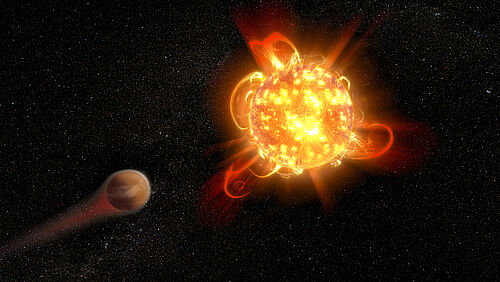It is a long-cherished dream of mankind to realize the fusion of atomic nuclei, as it takes place inside the sun, in a controlled way on Earth. The U.S. team created the energy-yielding fusion plasma using the world's largest laser, the National Ignition Facility. The research groups led by Professors Dominik Kraus and Ronald Redmer of the University of Rostock have been conducting their experiments for several years at the same laser facility where the groundbreaking progress in fusion research has now been achieved. In their research, the astrophysicists are primarily interested in gaining a better understanding of matter under extreme conditions, such as those found inside so-called brown dwarfs - celestial bodies that are neither stars nor planets - or small stars. Planets have already been discovered in orbit around these small, very common stars, the so-called red dwarf stars, on which life could at least theoretically be possible.
States at extreme pressures and temperatures such as those inside stars, known as plasma, also play a central role in fusion research. Thus, the Rostock-led astrophysics experiments, together with a long tradition of theoretical work on plasma physics, are closely linked to recent breakthroughs in fusion research. In fact, Kraus and Redmer are working with some of the leading scientists of the fusion experiments at Lawrence Livermore National Laboratory - their collaborations are a very good example of how decades of basic research can produce breakthrough applications to secure basic needs of modern society.
After all,a future secure and clean energy supply for mankind is currently more topical than ever before. In the future, the Rostock researchers will link their astrophysical research even more closely with applications, in addition to fusion for energy production, for example, also for the development of novel materials.
Contact information:
Prof. Dr. Dominik Kraus
University of Rostock
Institute for Physics
Working Group High Energy Density Physics
Tel.: +49 381 498 6930
dominik.kraus@uni-rostock.de
Prof. Dr. Ronald Redmer
University of Rostock
Institute for Physics
Worksing Group Statistical Physics
Tel.: +49 381 498 6910
ronald.redmer@uni-rostock.de

